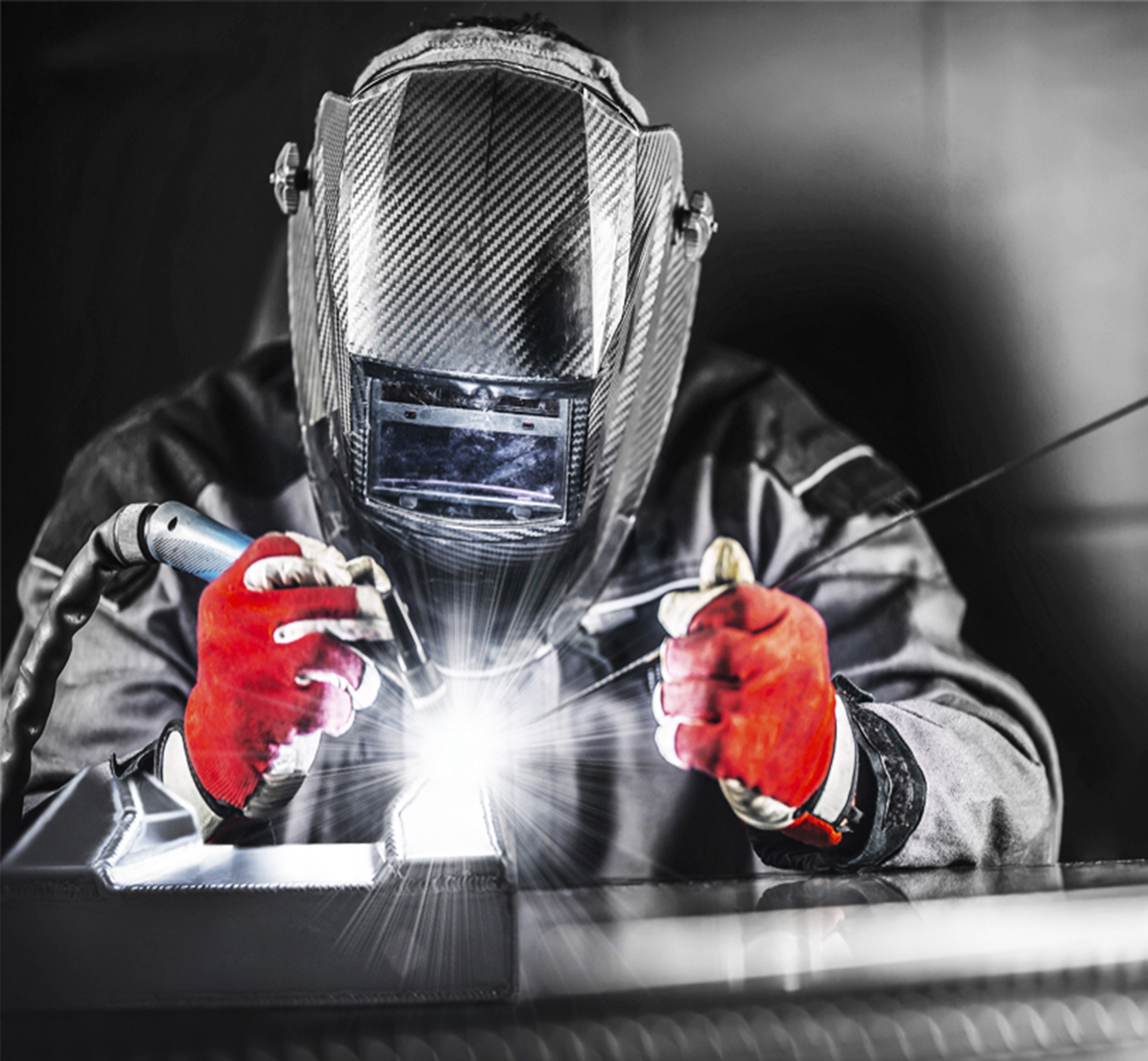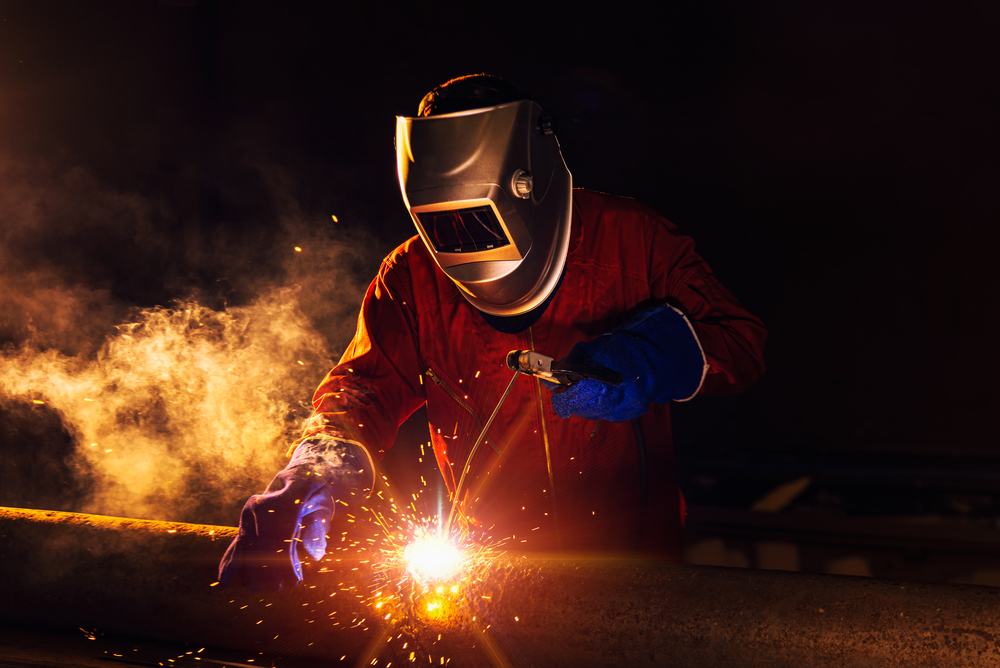Everything about Welding: Key Insights Into Techniques and Best Practices for Success
Welding incorporates a selection of strategies, each matched for particular products and applications. Recognizing these methods, such as GMAW, SMAW, and TIG, is important for attaining ideal results. In addition, the appropriate equipment and security practices can not be neglected. As prep work and troubleshooting play important functions in the welding procedure, understanding these components can significantly enhance the top quality of the last product. What are the crucial factors that assure a successful weld?
Recognizing Various Welding Strategies
Welding techniques encompass a selection of techniques, each suited to specific applications and products. Amongst one of the most usual methods are Gas Steel Arc Welding (GMAW), Protected Steel Arc Welding (SMAW), and Tungsten Inert Gas Welding (TIG) GMAW, likewise known as MIG welding, is preferred for its speed and flexibility, making it optimal for slim products. SMAW, or stick welding, is preferred for its simpleness and performance in exterior atmospheres, particularly with thicker metals. TIG welding provides accuracy and control, making it ideal for detailed job and non-ferrous steels (Belgrade Fabrication). Each strategy has its one-of-a-kind advantages and factors to consider, enabling welders to pick the most effective technique based on the job's requirements, product kind, and wanted results. Comprehending these methods is essential for successful welding
Important Welding Equipment and Devices
While different welding methods need specific skills, the right equipment and devices are equally vital for attaining top quality results. Vital welding equipment includes welding equipments, which differ depending upon the technique-- such as MIG, TIG, or stick welding. Protective gear, including gloves, aprons, and helmets, guarantees safety and security and convenience throughout the process. Furthermore, components and clamps aid safeguard materials in position, making sure accuracy in welds. Consumables like welding poles, cable, and protecting gas are additionally critical parts that affect the high quality of the weld. Tools such as mills and cutters facilitate surface area preparation and post-weld finishing, contributing to a professional outcome. Buying top notch devices eventually enhances the performance and performance of welding tasks.
Safety Practices in Welding
Appropriate safety methods are important in the welding sector to protect workers from prospective hazards. Welders must put on suitable personal safety equipment (PPE), consisting of helmets with proper shading, gloves, and flame-resistant clothes. Sufficient ventilation is essential to reduce exposure to dangerous fumes and gases created during the welding procedure. In addition, workers need to be learnt the right handling of welding tools to avoid accidents. Fire safety and security procedures, such as maintaining flammable materials far from the welding area and having fire extinguishers readily offered, are needed. Routine examinations of equipment and work areas can assist determine prospective hazards prior to they cause accidents. By adhering to these safety and security techniques, welders can develop a much safer working atmosphere and decrease threats connected with their profession.
Readying Products for Welding
Preparing products for welding is an essential step that greatly affects the quality and integrity of the end product (Montana Mobile Welding and Repair Belgrade Welding). Proper prep work entails cleaning up the surface areas to eliminate contaminants such as oil, dirt, and corrosion, which can endanger the weld. Strategies such as grinding, sanding, or making use of solvents are typically employed to attain a clean surface area. Furthermore, making sure that the products fit together snugly is crucial; voids can bring about weak welds. It's additionally crucial to take into account the placement and positioning of the elements, as this will influence the ease of welding and the final result. Picking the proper filler product and making sure compatibility with the base metals is essential for accomplishing solid, resilient welds.
Tips for Achieving High-Quality Welds
Achieving top notch welds needs attention to detail and adherence to finest methods throughout the welding process. Proper joint preparation is essential, guaranteeing surfaces are free and clean from contaminants. Selecting the proper filler product and welding technique based upon the base steels is vital for perfect bonding. Keeping constant travel rate and angle while welding can promote and stop defects uniformity. In addition, regulating heat input is necessary; excessive heat can lead to bending and damaged joints. Frequently inspecting the welds during the process permits instant adjustments if required. Using appropriate post-weld treatments, such as cleaning and tension alleviation, can enhance the sturdiness and stability of the weld, eventually guaranteeing a successful end result.
Repairing Typical Welding Issues
Welding commonly presents challenges that can affect the top quality and stability of the end product. Usual issues such as porosity, inconsistent weld grains, and getting too hot can arise, each calling for details fixing methods. Recognizing these problems is vital for welders to enhance their skills and attain suitable outcomes.
Porosity Issues Described
Although porosity can usually be neglected, it continues to be an important concern in welding that can compromise the integrity of a finished product. Porosity refers to the visibility of small gas pockets within the weld bead, which can lead and weaken the joint to early failing. This issue usually occurs from contaminants, wetness, or incorrect shielding gas coverage throughout the welding procedure. To alleviate porosity, welders should confirm that the base materials are dry and clean, make use of appropriate shielding gases, and maintain constant welding specifications. Routinely examining the equipment and setting can likewise assist determine possible issues prior to they manifest in the weld. Attending to porosity successfully is vital for accomplishing strong, resilient welds that satisfy high quality standards.

Inconsistent Weld Beans
Inconsistent weld grains can substantially influence the top quality and toughness of a completed item. more info Various factors contribute to this concern, including inappropriate traveling speed, wrong amperage setups, and irregular electrode angles. When the welder relocates also swiftly, a bead might show up slim and lack infiltration, while relocating as well gradually can trigger excessive accumulation. Additionally, making use of the incorrect amperage can result in either damaging or too much spatter, both of which concession weld honesty. The welder's method, such as irregular lantern motion, can additionally lead to unequal grain appearance. To mitigate these issues, welders should concentrate on preserving stable, regulated movements and making sure correct equipment setups to accomplish harmony in their welds. Consistency is essential to attaining strong and trustworthy welds.
Overheating and Warping Issues
Too much warmth throughout the welding process can lead to significant getting too hot and deforming problems, affecting the architectural honesty of the workpiece. These problems typically materialize as distortion, which can jeopardize alignment and fit-up, making more assembly testing. Variables adding to overheating consist of the option of welding specifications, such as voltage and travel speed, as well as the kind of material being welded. To mitigate these concerns, welders must keep consistent travel rate and appropriate warmth input while checking the work surface temperature. Additionally, preheating or post-weld warmth therapy can aid relieve stress and anxieties triggered by quick air conditioning - Montana Mobile Welding and Repair Belgrade Welding. Normal assessment and adherence to finest methods are important in protecting against overheating and guaranteeing the long life and integrity of bonded frameworks
Frequently Asked Questions
What Are the Career Opportunities in the Welding Market?
The welding industry supplies diverse career opportunities, consisting of positions as welders, examiners, designers, and instructors. Experts can work in production, construction, aerospace, and automotive markets, gaining from strong demand and affordable wages in different functions.
Just How Can I Boost My Welding Speed Without Sacrificing Top Quality?
To improve welding speed without sacrificing quality, one must exercise efficient strategies, maintain devices, maximize setups, and boost hand-eye sychronisation. Routine training and seeking responses can likewise considerably add to attaining much faster, top notch welds.
What Qualifications Are Available for Welders?
Numerous qualifications exist for welders, including those from the American Welding Society (AWS), the National Facility for Construction Education and Study (NCCER), and various industry-specific companies. These credentials enhance employability and show ability efficiency.
How Does Welding Influence the Features of Metals?
Welding affects the properties of steels by altering their microstructure, which can result in changes in toughness, ductility, and solidity. Heat input and cooling prices during the process substantially impact these material attributes.
Can I Weld Dissimilar Metals Together?
